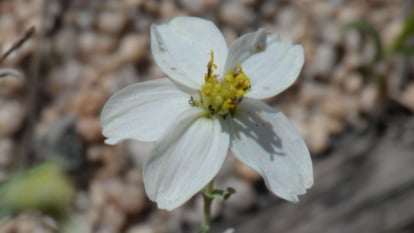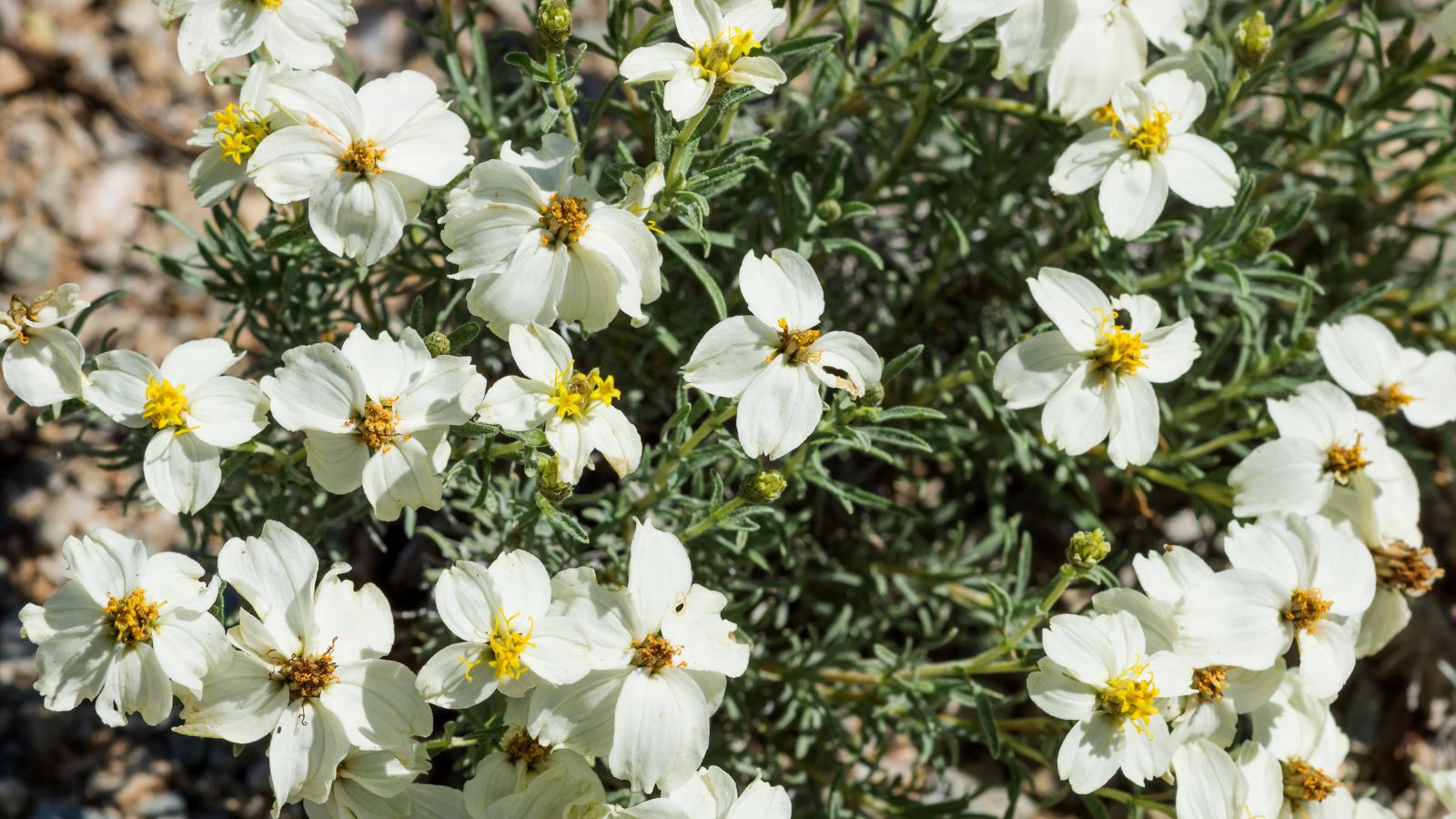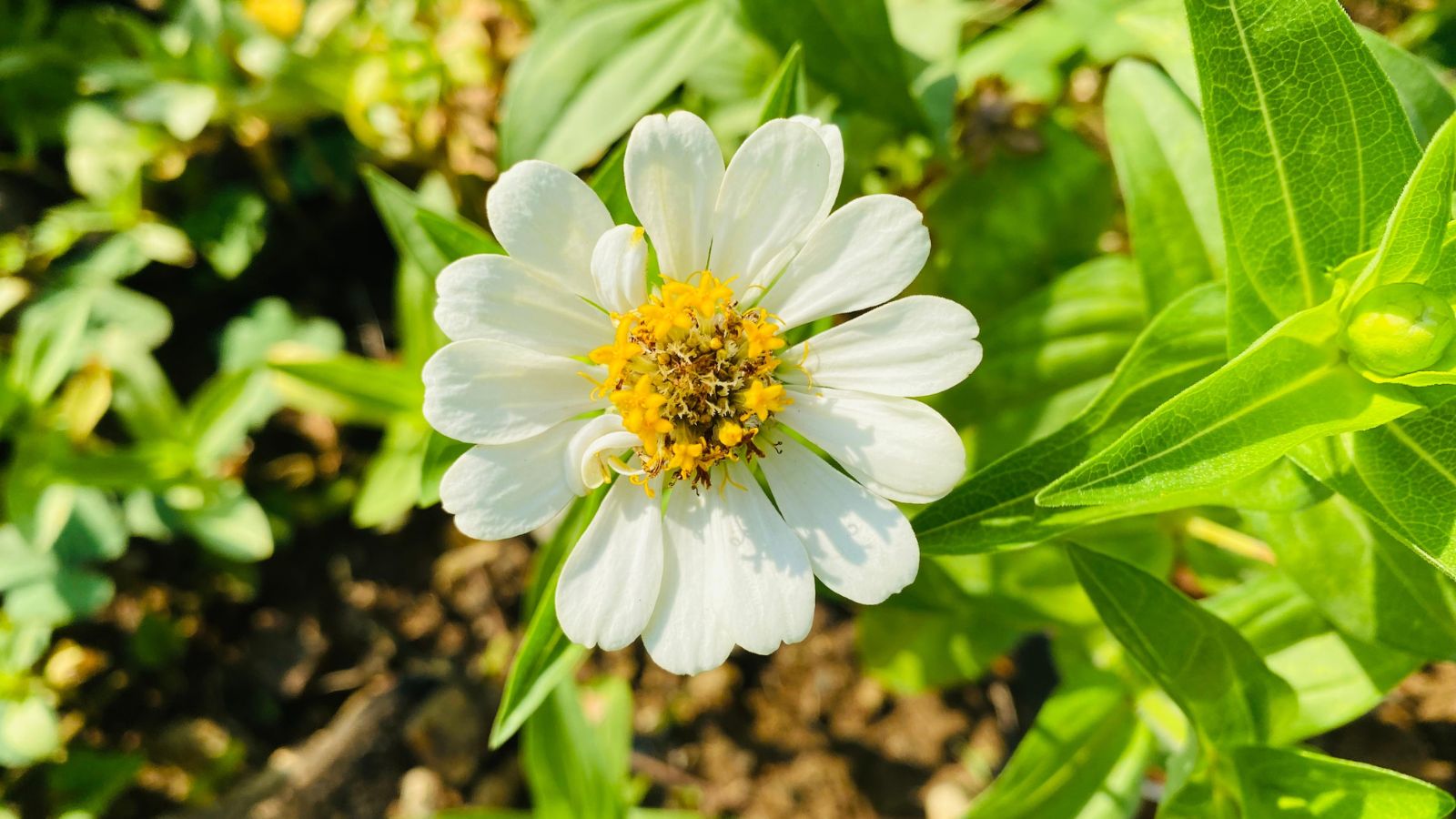PROTECT YOUR DNA WITH QUANTUM TECHNOLOGY
Orgo-Life the new way to the future Advertising by AdpathwayI am enormously fond of zinnias in all their forms. They are some of the most dependable, sturdy, and colorful plants in the garden. There are so many things to love about zinnias, from their flowers to their drought-tolerance and their exceptionally long bloom time.
If you care for your zinnias properly, they will bring color to the garden all summer and into the fall. They also attract and feed beneficial insects with their nectar and pollen-rich flowers.
You’re probably most accustomed to the species known as Zinnia elegans. These are the tall, bold, and bright annuals that many gardeners plant every summer. There are other great species to explore, though, and here we will discuss Zinnia acerosa, or desert zinnia.
Desert Zinnia Overview

|
Plant Type Perennial or evergreen Family Asteraceae Genus Zinnia Species Acerosa |
Native Area Southwestern United States and Northern Mexico Exposure Full sun Height 6”-12” Watering Requirements Low |
Pests & Diseases Aphids, spider mites, leafhoppers, powdery mildew, root rot Maintenance Low Soil Type Sandy, gravelly, well-draining Hardiness Zone 6-10 |
What Is It?
Zinnia acerosa, which goes by the common name desert zinnia, is a delightfully drought- and heat-tolerant species of the much-loved Zinnia genus. This smaller, shrubbier species has a reputation for being low-maintenance, pest- and disease-resistant, and easy to care for.
Characteristics
 They have small, daisy-like flowers with yellow centers.
They have small, daisy-like flowers with yellow centers.Desert zinnias are low-growing, shrubby plants with a mounding, spreading habit. They reach a height between six and 12 inches tall and are one to two times as wide. They have small, grey-green leaves that are narrow but good at conserving water.
The flowers are small and daisy-like, with cream-colored petals and yellow centers. As they age, the petals take on more yellow tones, finally maturing to a butter yellow. They bloom prolifically and for an extended period from spring through fall.
In mild climates, desert zinnias are evergreen, retaining their foliage throughout the year. In the cooler reaches of its range, it acts as a perennial. You can also grow these as an annual in cooler climates that are outside their perennial range.
Native Area
 The wildflowers are native to the southwestern United States and parts of Mexico.
The wildflowers are native to the southwestern United States and parts of Mexico.Desert zinnias are native to the desert and grassland regions of Arizona, New Mexico, Utah, Texas, and parts of Northern Mexico. It tends to show up in arid, rocky landscapes, including deserts, and prefers areas with sandy, alkaline soil.

Planting
You can grow desert zinnias in the ground or in containers. The species is well-suited to both. If you have heavy, dense soil, growing them in containers or raised beds may be more effective for drainage reasons. Take into account their growth habit, which is characterized by a shrubby and low-growing nature. They have a wider spread, so make sure to give them room to stretch out.
Transplanting
 Plant them just as you would other flowers or vegetables.
Plant them just as you would other flowers or vegetables.Transplanting desert zinnias is easy, and they don’t need any special considerations. In spring, after the last frost has passed, is the ideal time for planting. If you’re simply moving them around to find a perfect location, you can dig them up with little issue.
Be gentle about digging them up or removing them from their containers. Loosen the roots a bit and replant them in their new location. Water them well, and then keep the soil moist for the first month to allow the roots to establish firmly.
Growing From Seed
 They germinate quickly in warm soil.
They germinate quickly in warm soil.Growing desert zinnias from seed is simple and straightforward. While you can start them indoors, most gardeners choose to directly sow them in the garden. They germinate quickly, and they’re fast growers, so it doesn’t make much sense to put in the extra work of starting them indoors.
Whether you’re directly sowing or transplanting seedlings, wait until after the last anticipated frost date. They prefer warm soil and germinate faster in this environment. The ideal soil temperature is between 65 and 70°F (18-21°C).
Prepare the soil, amending it as needed to improve drainage. This is a crucial factor in achieving success with these plants. Loosen the soil about six inches to one foot deep to encourage fast root development. Sow the seeds shallowly, about 1/4 inch deep.
Water in your seeds gently to avoid dislodging them. Keep the soil lightly moist throughout the germination process, which typically takes about seven days but can take up to two weeks, depending on the weather conditions. When your seedlings are a few inches tall, thin them to one plant every 12″-18″.
How to Grow
Growing desert zinnias is a cinch. They grow and bloom delightfully quickly and require little care once they have established roots. They are efficient with nutrients and won’t require you to spend hours tending to them, dealing with pests, and managing diseases.
Light
 Like the common Zinnia elegans, desert zinnias need lots of direct sunlight.
Like the common Zinnia elegans, desert zinnias need lots of direct sunlight.When it comes to the sun, desert zinnias will take all you give them. They require full sun exposure to bloom optimally. Make sure to plant them in a spot that gets at least six to eight hours of sunlight a day.
These plants are accustomed to desert conditions where they grow in open, exposed areas. They tolerate extreme heat and handle the reflective light conditions common to desert landscapes.
In partial sun, you’ll still get some growth and flowers from these, but you won’t see them live up to their full potential. They may become leggy and sparse, produce fewer flowers, and have more issues with fungal diseases.
Water
 Don’t forget to irrigate immediately after planting.
Don’t forget to irrigate immediately after planting.When you first plant them, and in the period after they sprout, you’ll want to water them regularly. Do this for about three weeks, until the plant establishes roots.
After they’re established, desert zinnias are exceptionally heat and drought-tolerant. In regions with regular rainfall, it’s unlikely that you’ll need to water them. In hot and windy weather, they may require some attention, and during periods of prolonged drought.
Soil
 Keep their native arid climate in mind by planting in well-drained soil.
Keep their native arid climate in mind by planting in well-drained soil.Desert zinnias prefer the type of soil found in arid, desert climate regions. They don’t mind poor soil conditions as long as there is adequate drainage. Planted in dense or heavy soil, these are prone to root rot.
Stick with sandy or gravelly soil, or mix these amendments into your existing soil. If you have heavy soil, consider growing these plants in containers or raised beds, where you can control the soil composition to better suit their needs. They prefer a neutral to slightly alkaline environment.
Temperature and Humidity
 Like others in their genus, desert zinnias handle hot temperatures with ease.
Like others in their genus, desert zinnias handle hot temperatures with ease.Desert zinnias not only tolerate hot weather, but they thrive in it! Temperatures up to 100°F (38°C) and higher are just fine for this tough little perennial. In terms of low temperatures, they will continue to grow and flower until nighttime temperatures drop below 40°F (4°C). Once mature, they tolerate a light frost.
You can probably guess how these plants feel about humidity. They don’t love it. These desert plants prefer dry, arid conditions. High humidity will make your desert zinnias more susceptible to fungal diseases, such as root rot and powdery mildew.
Fertilizing
 There is usually no need for fertilizer.
There is usually no need for fertilizer.Unless you notice them looking pale and droopy, desert zinnias don’t really need fertilizer. In a container, if you don’t re-pot occasionally, the nutrients may leach out of the soil. In this case, or in the event that you have depleted soil, a bit of compost or organic fertilizer should do the trick. You won’t need much, as these plants are used to being deprived of nutrients in their native range.
Maintenance
 They respond well to pruning, but don’t need it regularly.
They respond well to pruning, but don’t need it regularly.Pruning is not a must, but it can improve the overall look and shape of your plant. You may want to prune when your plant has finished its first blooming cycle. An all-over, light shearing will encourage plants to have another significant bloom cycle.
If you want to clean up and keep your plants trimmed to a certain shape and size, desert zinnias will respond well to that kind of pruning. Always remove dead and damaged foliage, any time it occurs, for the general health of the plant.
Propagation
 Cuttings or seeds can be used to replicate the plants.
Cuttings or seeds can be used to replicate the plants.Propagation of desert zinnias is typically from seeds. Because they are easy to start and grow quickly, most gardeners stick with this effective measure. You can, however, propagate these from cuttings. Here is how you do it:
Start in spring or summer when there is plenty of soft, new growth. Take four to six-inch softwood cuttings, and remove the lower leaves. Dip the cut end in rooting hormone and plant in moist cactus or succulent mix or other well-draining potting mix.
Keep your cuttings moist and in a warm spot with bright indirect light. It should take about three to four weeks for them to root, at which time you can transplant them outdoors.
Common Problems
Desert zinnias are surprisingly resilient and resistant to most pests and diseases. To be blunt, they’re hard to kill. There are, however, a handful of issues you may encounter, so let’s take a look at those.
Pests
 Nuisance aphids and spider mites don’t usually cause major damage.
Nuisance aphids and spider mites don’t usually cause major damage.When grown in their preferred climate, desert zinnias have few enemies. Outside these conditions, you could encounter a couple of nuisance insects that you might come across. Aphids are plentiful in most places, and they’re not picky eaters. It shouldn’t surprise you that they pop up all over the place, even on your desert zinnias. Spray them off the plants with a strong stream of water from a hose.
Spider mites prefer hot, dry conditions, which is why they are more common in their native climate. You won’t see the mites, but their fine webbing is usually visible under leaves and around the stems. Now and then, you may happen on a leaf hopper or a caterpillar. These rarely do serious damage.
Most pests are easy enough to deal with. Either physically remove the affected plant or treat with neem oil. Most garden pests have numerous predators, so it’s beneficial to plant insectary plants that attract beneficial insects, such as lacewings and ladybugs.
Diseases
 They are more vulnerable to fungal issues in humid climates or areas with poorly drained soil.
They are more vulnerable to fungal issues in humid climates or areas with poorly drained soil.In their native climate, these plants also encounter few disease issues. Issues may arise in more humid conditions where they become more vulnerable to fungal diseases. Dense or compacted soil can also add to these issues.
Root rot is a possibility if you have clay or other dense soil. The roots of your desert zinnia are susceptible to fungus, and once they rot, the plant is unlikely to recover. You can combat this by amending your soil with plenty of sand or gravel, or by growing it in a container.
Powdery mildew is a fungal disease caused by an overabundance of moisture. It can happen because of high humidity and poor ventilation, or from overhead watering and watering at the wrong time of day.
Ensure your plants have sufficient space to grow and receive ample sunlight. This will go a long way toward preventing powdery mildew. Installing drip irrigation or soaker hoses also helps mitigate the issue.
Frequently Asked Questions
Desert zinnias pair well with other drought-tolerant and heat-loving plants. They are great for xeriscaping and rock gardens, for the water-wise gardener.
These plants are not toxic and are considered completely safe around pets and people.
In warm climates, leave them in place and reduce watering to protect against root rot. In cold climates, either grow them as an annual or transfer them into containers and bring them indoors.


 2 weeks ago
14
2 weeks ago
14





















 English (US) ·
English (US) ·  French (CA) ·
French (CA) ·